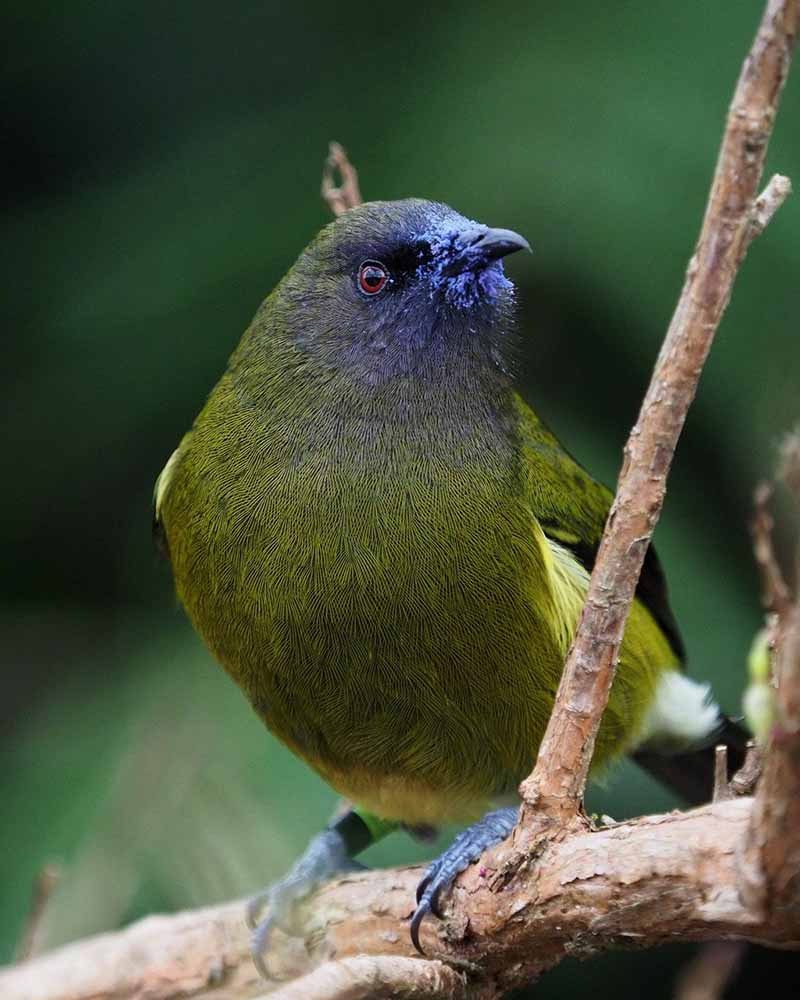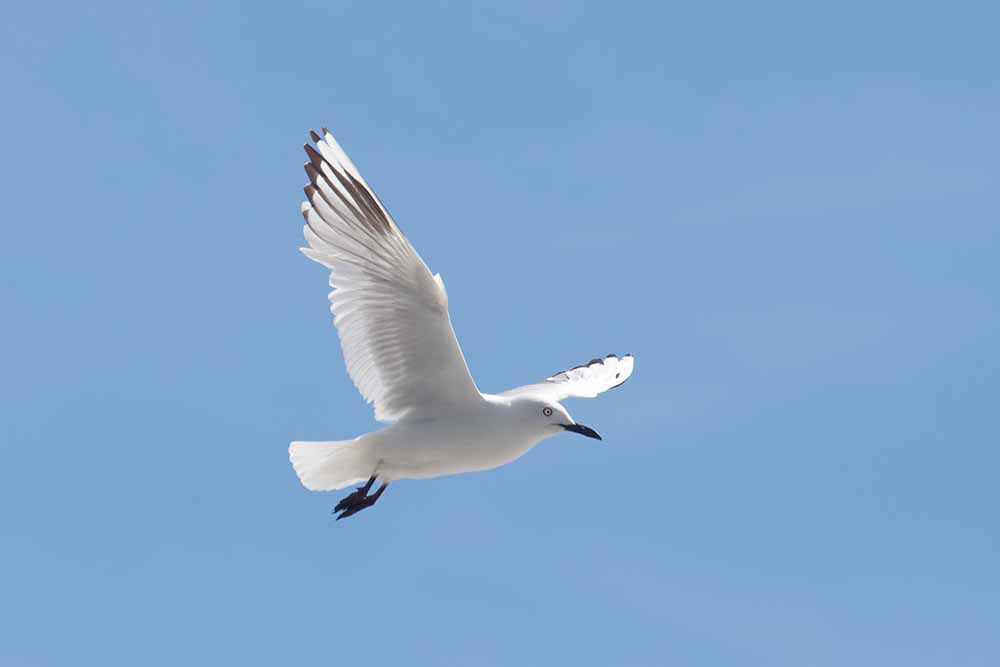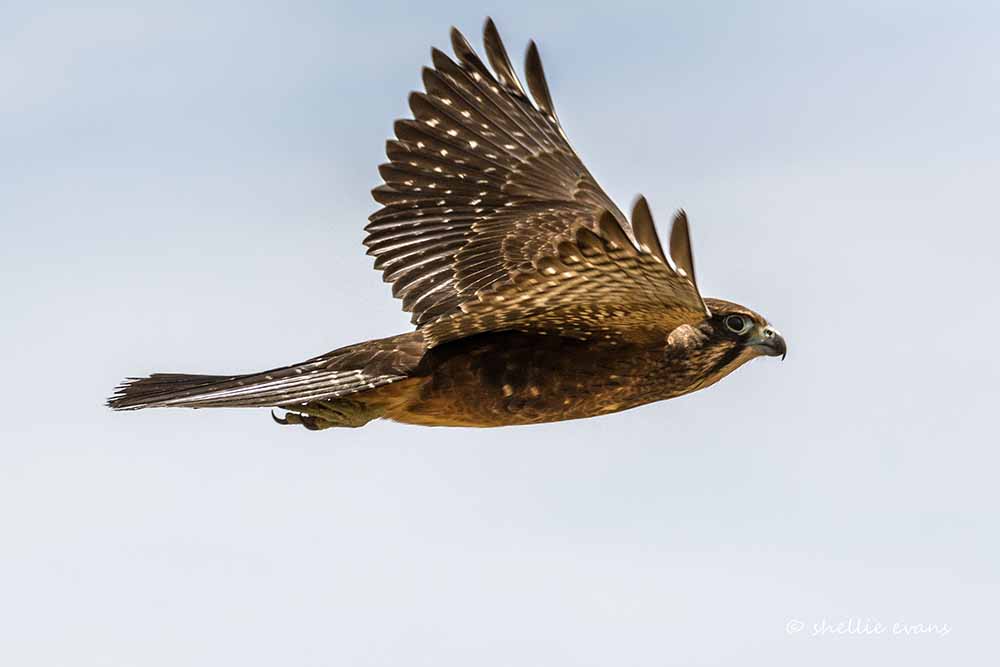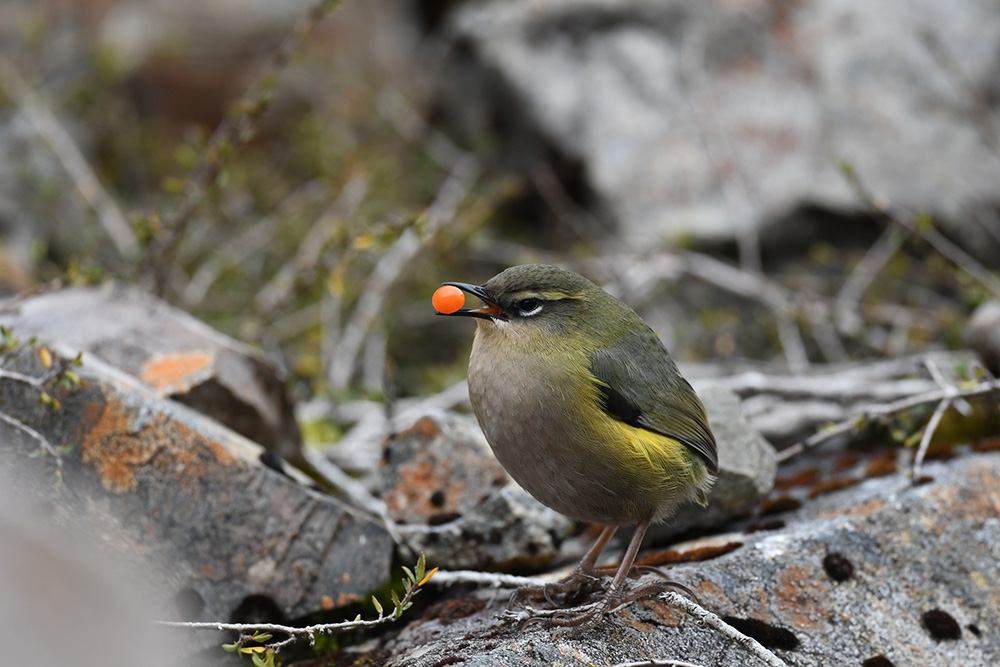Southland’s Bird Life
- Bellbird feeding on Kōtukutuku © Nga Manu Images
The braided riverbeds, hills and mountains of Northern Southland provide important habitat for several special bird species.
While lowland parts of Northern Southland have lost much of their diversity of bird-life, other parts are home to rare and endangered bird species, including the only known population of rock wren (piwauwau) outside the Southern Alps.
On the Rivers
The endemic black billed gull (tarāpuka), which nests on the Ōreti River and the nearby Lumsden Creek, is the most endangered gull in the world. More than 50% of its population are believed to live and breed in Southland. The black-billed gull is more slender than the red-billed gull, with a longer bill. During the breeding season, they feed primarily on invertebrates from rivers and adjacent pasture.
Banded dotterels and black-fronted terns also inhabit braided riverbeds and return here annually for breeding, laying their eggs in rocky nests.
In the Bush
Populations of falcon (kārearea), wood pigeon (kereru), tūī, bellbird (korimako) and yellow-crowned parakeet (kākāriki) also inhabit areas of Northern Southland. The South Island and the Stewart Island robin (kakaruwai) are common in many forested areas. Look out for their distinctive white chests!
Special Treasures
The flightless takahē, which were thought to be extinct, were rediscovered in the Murchison Mountains near Te Anau in 1948 and with a careful recovery programme from DOC, their numbers have increased to just over 400 birds, although they are still classified as Nationally Vulnerable. Takahē have special cultural, spiritual and traditional significance to Ngāi Tahu.
Kea would once have been more common in Northern Southland, and are occasional visitors to the Eyre Mountains. Remnant populations of yellowhead (mohua) are found in Waikaia’s forests. Blue ducks (whio) would once have been found in the Waikaia, Ōreti, Mataura and Eyre mountain areas.
Did you know?
The thought-to-be extinct South Island kōkako was one of five species of New Zealand wattlebirds, an endemic family that includes the living North Island kōkako, saddlebacks, and the extinct huia. The last confirmed sighting of the South Island kōkako was in 1967 but unconfirmed sightings continue to be reported.





